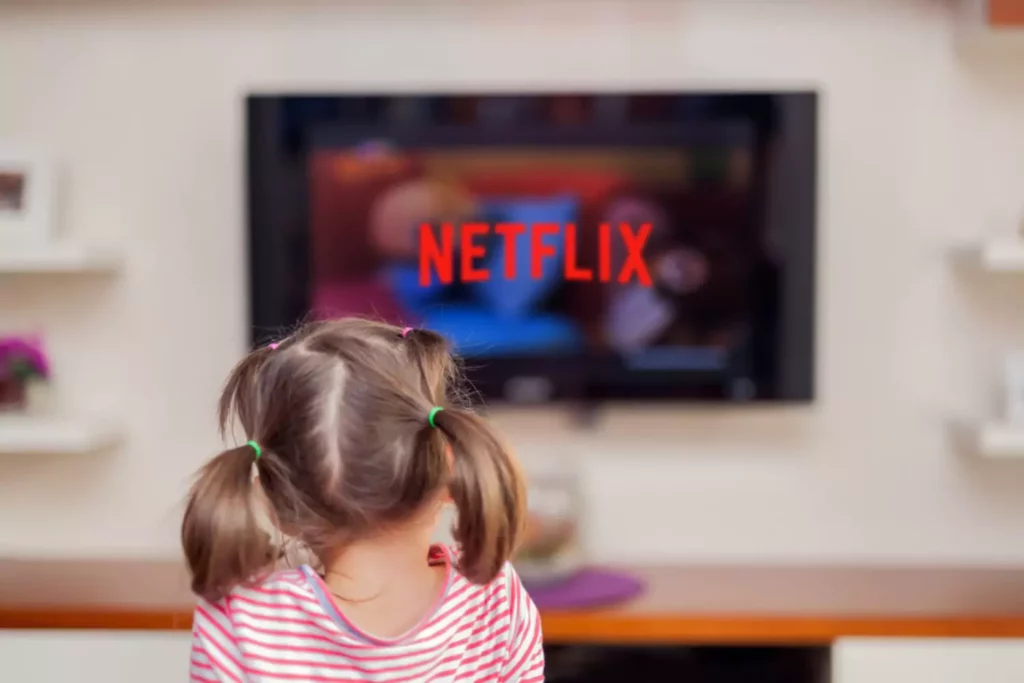
Tech Trends: AI Cheating, ‘Dumb Phones’ and Teen Slang
This month: how to stop your child from using AI to cheat, why dumb phones might be a smart screen-time solution, and a list of tween and teen slang

We can’t always trust they are watching something wholesome.
Estimated reading time: 6 minutes
If you have a Netflix account, you have access to parental controls. With more than 15,000 titles in its library, that’s a whole lot of TV shows and movies to sift through and vet to make sure it’s suitable for your family. And, let’s be honest: Even with Plugged In’s help, ain’t nobody got that kind of time.
So, what can you do to make Netflix a bit safer for your kids? Well, you can activate the parental controls on your account to help ease your mind a little when it comes to what they’re watching. You can update your password and/or PIN so your kids can’t change the settings on their own. And, as we always suggest at Plugged In, you can have a discussion with your kids and teens about what they should or shouldn’t be watching so that they can learn to think critically about what they’re watching and discern what’s appropriate on their own.
And don’t worry, no matter what your speed (i.e. video tutorial or good ol’ fashioned step-by-step instructions), we’ve got you covered.
If you despise reading instructions or just prefer someone to show you how to do something, then go ahead and follow along with this video at Plugged In.
One way to ensure a safer viewing experience is to create individual Profiles for each member of your family. This will allow you to adjust the Maturity Ratings and Title Restrictions based on each person’s needs.
Once you’ve created separate Profiles, you’ll want to add a PIN to each of them (except maybe the youngest child’s) in order to make sure that younger kiddos don’t accidentally watch an inappropriate show for them on big bro’s Profile.
Now, I won’t want to assume that if your kids have the Netflix password, they’ll use it to watch inappropriate stuff. That’s neither fair nor true for many kids. But if you do suspect that your kids are abusing the Netflix password (or if you just want to limit the number of devices they’re watching it on), then follow these steps to tighten things up a bit.
As an additional note, when logging into new devices (or logging back into old ones), enter the password yourself if you don’t want your kids to go back in later and change the settings. And don’t allow your device or browser to autosave your login details.
If you realize you forgot Step 4a (or maybe if you forgot to log out after watching Netflix at a friend’s house), then proceed with the following:
A quick note before we dive into this section in earnest: At Plugged In, we like to encourage discussion. If your son or daughter wants to see (or perhaps has already seen) something you don’t think they’re ready for, blowing up at them probably isn’t the right reaction. We’ll give you the tools here to figure out what they’re watching. But it’s up to you to have the conversation to figure out why and perhaps to help them learn why not in the future.
The final option in all of this is to delete certain Profiles (not a bad idea, in my opinion, if your teenager abuses their Netflix privileges) or to delete your Netflix account altogether.
To delete a Profile:
To delete your account:
As we said at the outset, Netflix has a lot of content. Some of it might be just fine for your family. Other shows and movies? Definitely not. And while Netflix’s parental controls can help keep your kids a little bit safer, keep in mind it’s not a perfect solution. Sure, it can automatically filter out films with R-rated content, but it certainly won’t help you comb through shows with philosophical or worldview issues. Netflix’s parental controls can be a helpful tool—but never treat it as a cure-all. When it comes to protecting your kids from problematic content, the best tool is you—your guidance, your grace and your on-going conversations with them.